Many monasteries have been founded or restored by the blessing of Elder Ephraim (Moraitis), former abbot of the Athonite Philotheou Monastery, who went to America at the instruction of the Mother of God to organize monasteries according to the Athonite order, and has remained the spiritual father of several monasteries on the Holy Mountain and throughout Greece.
In the Orthodox liturgical cycle, every day of the week is dedicated to a particular saint or event, with Tuesdays being dedicated to the Prophet, Forerunner, and Baptist of the Lord John, who is the patron saint of one of these monasteries under the guidance of Elder Ephraim. Abbess Methodia spoke to us about the Convent of the Forerunner and Baptist of the Lord John near the Greek city of Naousa, and about her path to the monastery.
The Lord granted us to meet holy people
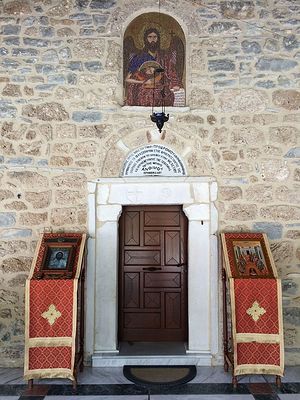 The monastery church
The monastery church I first met dear Gerontissa Macrina at Mrs. Mary’s house. This meeting played a decisive role in my life. I already had the desire to become a nun, but as soon as I met Gerontissa Macrina, that was it. I didn’t want to go to any other monasteries and meet other gerontissas—she was enough for me.
In 1975, when I turned twenty-one, I went to the monastery in Portaria to become a nun. Blessed Gerontissa Macrina, the abbess of the monastery, was still alive then, and I lived together with her for nearly twenty years.
Oh, I do not have enough zeal. The Lord vouchsafed me to get to know Elder Ephraim and Gerontissa Macrina at such an early age, and I should have become different, but, unfortunately, I have failed. The Lord granted us to meet holy people, and we hope to be saved only by their prayers.
“Do you want to go open a monastery in Naousa, Methodia?”
When I had already been in Portaria for many years, our bishop Panteleimon (Kalpakidis) assumed the episcopacy in Veria and Naousa. His Grace (now the metropolitan of Veria and Naousa) really loved monasteries and monastics and decided to restore the unique, ancient Monastery of St. John the Forerunner in Naousa, which used to be for men and was active until 1939.
 Elder Ephraim (Moraitis)
Elder Ephraim (Moraitis) At that time, Elder Ephraim had already begun to go to America and began his “great work” of opening Orthodox monasteries there. He was also the spiritual father for the sisters in Portaria by the blessing of his great spiritual father, the venerable Joseph the Hesychast.
In 1994, His Grace met with Elder Ephraim in Portaria, told him about his desire to restore the monastery in Naousa and asked the elder, as the spiritual father of the monastery, to give his blessing to send two sisters from Portaria there. Elder Ephraim called for me and asked, “Do you want to go open a monastery in Naousa, Methodia?” I thought for a bit and said, “May it be blessed, I will go and help His Grace.”
The elder blessed me: “You will go with Sister Theologia.” He always sent sisters to new monasteries in pairs, as the Lord sent the apostles. “May it be blessed”—what else could I say?
The heroic city of Naousa and the ancient Monastery of the Forerunner
The place where I had to go was special. Naousa is a complicated city. In 1955 it was declared a heroic city for its contribution to the 1821-1829 Greek War of Independence from the Turkish troops and for the casualties suffered in this war.
The Monastery of St. John the Forerunner is located at a distance of about 2.5 miles from the city of Naousa, on the hills in the majestic chestnut forest. It is believed that the monastery was built in the seventh century, but there is no written evidence of this, because a fire destroyed the city of Naousa in 1822, and all the documents burned. In modern times, the most ancient mention of the monastery is found in the manuscripts of Vatopedi Monastery, dated to 1431.
The Monastery of St. John the Forerunner was repeatedly subjected to attacks and destruction by the Turks and Bulgarian magistrates. In the nineteenth century the monastery was burned and plundered by the Turks. Later, in the beginning of the twentieth century, the monastery became an obstacle for the Bulgars, as it was right in the path of their troops’ movement. In June 1904, the monastery was plundered and burned by the Bulgarians, the only buildings remaining being the kitchen, bakery, and church, which, although it burned, was not destroyed, because the fire went out. A month later, in June, Bulgarian soldiers again attacked the monastery, killed all the monks, and burned everything that was not yet burned. The church was again preserved in a miraculous way.
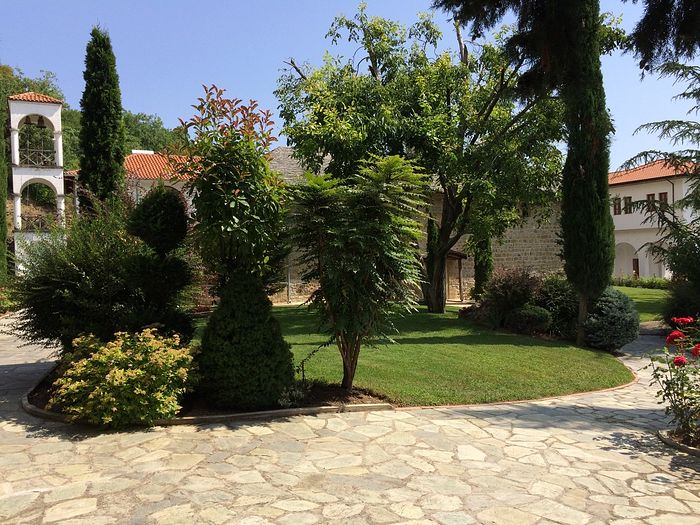 In the monastery
In the monastery Metropolitan Stephen appealed to the residents of Naousa, asking to rebuild the damaged monastery, which was completed in a short time; and for the third time, in 1906, the monastery was seized and burned by the Bulgarians, but again the church was miraculously delivered from destruction.
On the eve of the Second World War, there were three monks living in the monastery, two of which came from Xeropotamou Monastery on the Holy Mountain. During the war, the monastery sheltered many groups of refugees who were hiding from occupants, and also partisans who fought against the fascist invaders. Therefore, the monastery was again destroyed by German troops and after the Second World War it was again devastated, without a single monk.
It was hard for me to go to a new place
Of course, it was hard for me to go to a new place, to restore an abandoned monastery; it was especially hard to leave my home monastery in Portaria, where I had lived for quite a few years already. Over the next year, Sister Theologia and I regularly went to Naousa to prepare the monastery for opening: We decided what needed to be done, how to build the cells for ourselves, and so on.
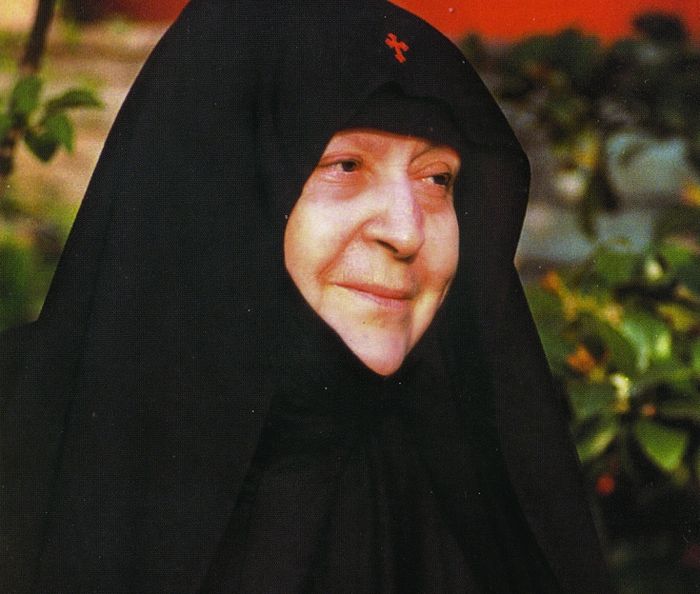 Gerontissa Macrina (Vassoloulou)
Gerontissa Macrina (Vassoloulou) Gerontissa Macrina was still alive then—it was her last months. After her blessed repose in May 1995, we finally decided to permanently move to the monastery in Naousa. We came here in September of the same year, and with God’s help we someone survived our first year. Then after a while two other sisters, originally from Naousa, joined us.
In the summer of 1996, an ancient revered miraculous icon of the honorable Forerunner John, which had earlier been stored in the city of Naousa, was returned to our monastery.
It feels like we’ve come to a different monastery
 The monastery sisters
The monastery sisters I was thirty-nine then, and of course I didn’t have as much experience in my monastic life as was needed to organize a monastery; I had no concept of it. Everything here looks wonderful now, but this place was completely deserted when we had just arrived, in a lamentable state; but the locals started to help us rebuild the monastery with great love from the very beginning. They would come and ask, “What do you need? How can we help?” And so everything came together gradually.
Now there are four of us, and we have labored here for twenty-one years already. When the people who saw how the monastery looked initially come here now, they say, “It feels like we’ve come to a different monastery.”
The Forerunner always helps us
However, it’s a little difficult financially now because of the crisis in Greece, and people don’t have the necessary funds, but what you can do? Glory to God for all things—we are glad for what little the Lord blesses us with. The Forerunner always helps us.
The monastery territory is big enough and includes farm buildings, gardens, and this is all supported by three of the sisters—I don’t help them with farming because I cook. That’s my obedience—in the kitchen.
How our day goes
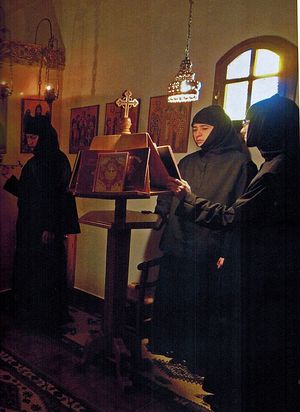
Sometimes it happens that we don’t manage to finish our obediences on time or breakfast is late because we are only a few people working together with the workers, and we can’t manage to do it all. In certain periods we have more work than usual, and then our daily routine changes a little.
We feel the prayers and intercession of our spiritual mentors
We feel the prayers and intercessions of Gerontissa Macrina and Grandpa Joseph (as we call the venerable Joseph the Hesychast, because he was the spiritual father of our spiritual father Elder Ephraim). If not for their help, humanly speaking, we wouldn’t be able to cope with the restoration of our monastery and the other work; and of course our Elder Ephraim prays for us. He himself tells me that there is no day wherein he doesn’t pray for us—not a single day. By their prayers we somehow exist, and within a short period of time we managed to restore the monastery from a completely desolate state.
Our monastery keeps a chronicle of numerous cases of miraculous help and healings. Here are some stories from this chronicle:
The healing of a deaf-mute child
(The story of a pilgrim)
In 1935, on the eve of the feast of the honorable Forerunner, a woman with a nine-year-old child, deaf and mute from birth, visited my family. This woman was my sister’s Godmother. Early in the morning, we started getting ready to go to church for the Divine Liturgy. In those days we had one small, white horse, on the back of which we sat our baby, and headed towards the monastery.
When we got close to the monastery, the child, who hadn’t said a single word her whole life, suddenly began speaking and asked her mother, “Mama, do you hear that? Are they playing musical instruments? Take me there so I can learn to play some instrument.”
We were all so struck by this miracle, that, turning to the East, we all crossed ourselves and said, “O Holy Forerunner, we honor you and your miracle!” From that time, the child began to speak. His name is Takis. He grew up, got married, and became a bus driver, and then a taxi driver. He always come to the monastery on every feast of the Forerunner, picking up and driving pilgrims along the way.
In 1987, the Forerunner appeared to him in a dream and invited him to his monastery to wait out the summer heat which he could barely tolerate due to some heart problems.

Psalmody in church
In 1997, Abbess Methodia went to America to meet with the spiritual father of the monastery, Elder Ephraim. One sister remained in the monastery, who tried to observe, with the help of some pious pilgrims, the usual monastery schedule.
One evening, the nun began to sing Vespers and then Small Compline along with several pilgrims. During Small Compline, all present suddenly heard male voices singing. The service briefly stopped to see where the voices were coming from.
There was no one in the altar and none of the male pilgrims were singing. The wonderful male singing continued, but they couldn’t pinpoint where it was coming from. At the end of the service, since the unknown singer hadn’t appeared, all present glorified the honorable Forerunner for his miraculous intercession and visitation to the monastery.
The thunder of the Forerunner
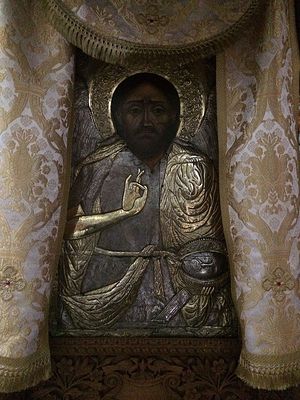 The miraculous icon
The miraculous icon I went into the altar and started looking for the censer. When I approached the Holy Table I heard a sound of thunder that lasted for five or six seconds. I didn’t know where it was from, but for some reason I decided an earthquake was beginning. I looked up to find where the sound was coming from, but I couldn’t find its source.
I told Gerontissa about what happened and asked her if she had heard anything. She said she hadn’t heard anything, and no one else there had heard anything either. Then Gerontissa simply said, “It was the Forerunner.”
A sweet fragrance in church
Pilgrims often express their surprise to their sisters about the intense fragrance they smell when they enter the monastery church.
One pious resident of Naousa had heard about this fragrance many times, but had never smelled it herself. Once when she had come to the monastery again to help the nuns with their farm work, she entered the church and she finally smelled the strong fragrance too. At first she thought the nuns had apparently recently censed the church, but Gerontissa assured her that no one censes the church at that time.
This pilgrim spent a long time cleaning the church. She opened all the doors to ventilate the room while she was cleaning. When she closed all the doors again after finishing the cleaning and was getting ready to leave, she again smelled the strong fragrance, despite the fact that the church had just been aired out.
Of course, she immediately thanked and glorified the Forerunner for this miracle, and then she went home.
The sisters say that the miraculous icon of the Forerunner gives off a stronger fragrance most often in the church. In Greece there is a tradition of cleaning the icons in church with scented perfumes. The sisters never dare to wipe this icon as it gives off a wondrous sweet fragrance by itself.

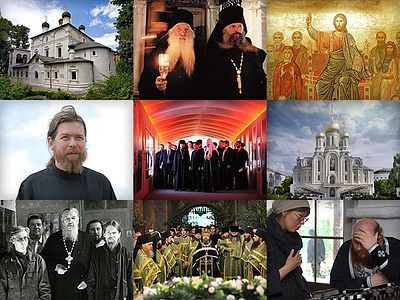

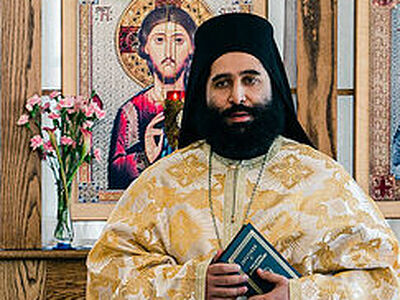
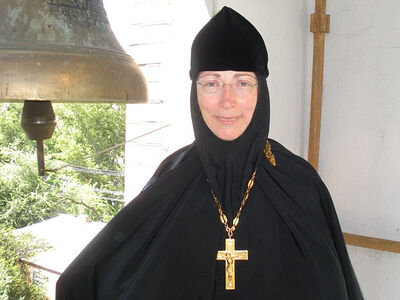
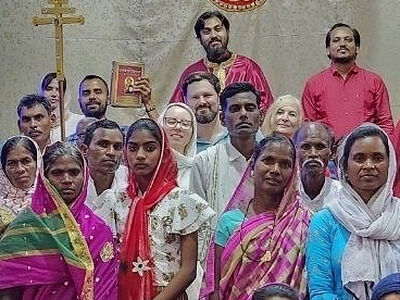



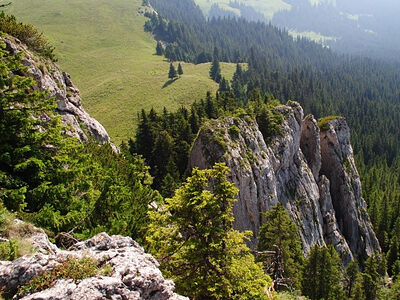
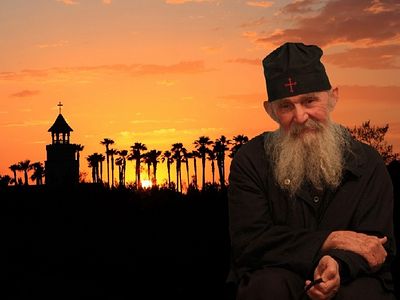 Catch a Fire: An Athonite Missionary to AmericaIt is said that the state of monasticism in a local Church is a microcosm of the state of that entire local Church, and thus America is undoubtedly in need of strong monasteries that can provide clear, Patristic guidance. Elder Ephraim came to America in response to the pleas of the faithful to provide this guidance, but in doing so many questions have been raised concerning the nature of Orthodox monasticism and teachings. To assess his role and importance for American Orthodoxy it is helpful to investigate his life and spiritual development, which will provide insight into him whom Metropolitan Hierotheos Vlachos says “received fire, and ... has imparted this fire ... to the Church in America that has great need of it.”
Catch a Fire: An Athonite Missionary to AmericaIt is said that the state of monasticism in a local Church is a microcosm of the state of that entire local Church, and thus America is undoubtedly in need of strong monasteries that can provide clear, Patristic guidance. Elder Ephraim came to America in response to the pleas of the faithful to provide this guidance, but in doing so many questions have been raised concerning the nature of Orthodox monasticism and teachings. To assess his role and importance for American Orthodoxy it is helpful to investigate his life and spiritual development, which will provide insight into him whom Metropolitan Hierotheos Vlachos says “received fire, and ... has imparted this fire ... to the Church in America that has great need of it.”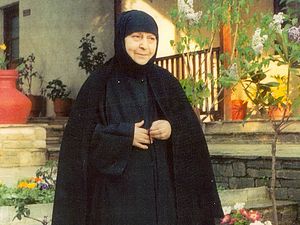 A Wondrous Purity of Mind. Blessed Gerondissa MacrinaOn June 4 we honor the repose day of blessed Gerondissa Macrina, abbess of the Panagia Hodigitria Monastery near Volos, Greece, and spiritual daughter of Elder Joseph the Hesychast and Elder Ephraim of Philotheos (and Arizona) (Moraitissa). Eldress Macrina acquired numerous spiritual gifts and was worthy of very lofty spiritual states.
A Wondrous Purity of Mind. Blessed Gerondissa MacrinaOn June 4 we honor the repose day of blessed Gerondissa Macrina, abbess of the Panagia Hodigitria Monastery near Volos, Greece, and spiritual daughter of Elder Joseph the Hesychast and Elder Ephraim of Philotheos (and Arizona) (Moraitissa). Eldress Macrina acquired numerous spiritual gifts and was worthy of very lofty spiritual states. The great work of Elder Ephraim of Arizona: A conversation with Alexandra Lagos, a spiritual child of Elder Ephraim''In this difficult period Elder Ephraim had so much grace that he exuded a sweet fragrance. Everything the elder touched began to sweetly smell. When he confessed children, covering their heads with his epitrachelion, their hair had this fragrance for a few days. If he touched napkins they began to emit this fragrance. His clothes and skufias emitted the fragrance. The stronger were the temptations, the stronger this fragrance was felt.''
The great work of Elder Ephraim of Arizona: A conversation with Alexandra Lagos, a spiritual child of Elder Ephraim''In this difficult period Elder Ephraim had so much grace that he exuded a sweet fragrance. Everything the elder touched began to sweetly smell. When he confessed children, covering their heads with his epitrachelion, their hair had this fragrance for a few days. If he touched napkins they began to emit this fragrance. His clothes and skufias emitted the fragrance. The stronger were the temptations, the stronger this fragrance was felt.'' Pascha at the Monastery of Vatopedi – 2015This well-made video shows the overwhelming spiritual joy of Resurrection that really fills the hearts of most community members.
Pascha at the Monastery of Vatopedi – 2015This well-made video shows the overwhelming spiritual joy of Resurrection that really fills the hearts of most community members.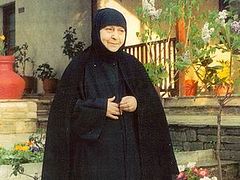

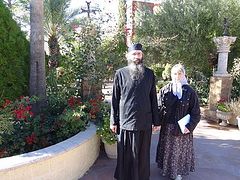
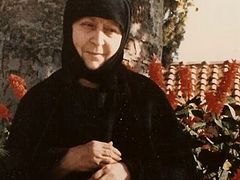

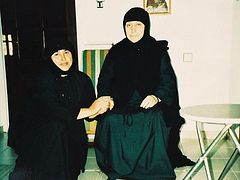
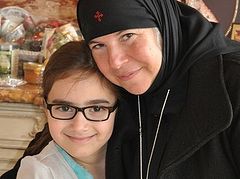
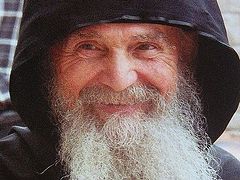




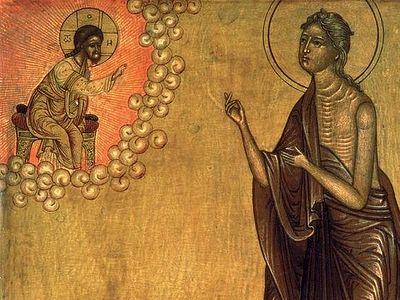





Thank you.